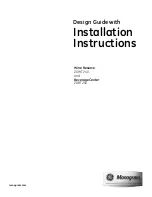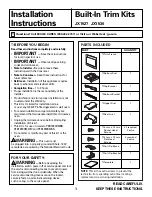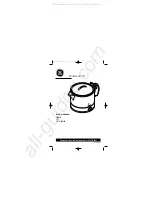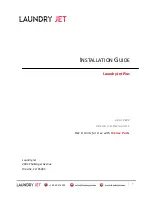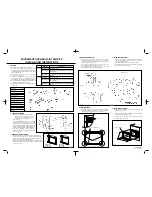
13
12
www.FoodSaver.com
Service:
1 (877) 777-8042
Preparation Guidelines for Hard Cheeses:
To keep cheese fresh, vacuum seal it after each
use. When you’re ready to reseal the cheese, just
place it back on the FoodSaver
®
Fresh Container or
zipper bags and vacuum again.
IMPORTANT: Due to the risk of anaerobic bacteria,
Soft cheeses should never be vacuum sealed.
Preparation Guidelines for Vegetables:
Vegetables need to be blanched before vacuum
sealing. This process stops the enzyme action that
could lead to loss of flavor, color and texture.
To blanch vegetables, place them in boiling water
or in the microwave until they are cooked, but still
crisp. Blanching times range from 1 to 2 minutes
for leafy greens and peas; 3 to 4 minutes for snap
peas, sliced zucchini or broccoli; 5 minutes for
carrots; and 7 to 11 minutes for corn on the cob.
After blanching, immerse vegetables in cold water to
stop the cooking process. Finally, dry vegetables on
a towel before vacuum sealing.
Note:
Some foods (including broccoli, Brussels
sprouts, cabbage, cauliflower, kale, turnips, onion,
mushrooms, garlic and bananas) naturally emit
gases during storage. Therefore, after blanching,
they must be stored in freezer only.
Thawing and Reheating
Vacuum-Sealed Foods
Always thaw foods in either refrigerator or
microwave — do not thaw perishable foods at room
temperature.
To reheat foods in a microwave in a FoodSaver
®
Fresh Container, release vacuum and you can keep
the lid on. Zipper bags must be partially open/
unzipped on microwave.
Guidelines for Meat:
Note:
Beef may appear darker after vacuum sealing
due to the removal of oxygen. This is not an
indication of spoilage.
Guidelines
Food Preparation and Reheating Tips
When freezing vegetables, it is best to pre-freeze
them for 1-2 hours or until solidly frozen. To
freeze vegetables in individual servings, first
place on a baking sheet and spread them out so
they are not touching. This prevents them from
freezing together in a block. Once they are frozen,
remove from baking sheet and vacuum seal
vegetables in a FoodSaver
®
Fresh Container. After
they have been vacuum sealed, return them to
the freezer.
IMPORTANT: Due to the risk of anaerobic bacteria,
Fresh mushrooms, onions and garlic should never
be vacuum sealed.
Preparation Guidelines for Leafy Vegetables:
First wash the vegetables, and then dry with
a towel or salad spinner. After they are dried,
put them in a FoodSaver
®
Fresh Container and
vacuum seal as normal. Store in refrigerator.
Preparation Guidelines for Fruits:
You can vacuum seal portions for baking, or in
your favorite combinations for easy fruit salad
all year round. If storing in the refrigerator, we
recommend using a FoodSaver
®
Fresh Container.
Preparation Guidelines for Baked Goods:
To vacuum seal soft or airy baked goods, we
recommend using a FoodSaver
®
Fresh Container so
they will hold their shape. To save time, make cookie
dough, pie shells, whole pies, or mix dry ingredients
in advance and vacuum seal for later use.
Preparation Guidelines for Coffee and Powdery Foods:
To prevent food particles from being drawn into
vacuum pump, place a coffee filter or paper towel
at top of bag or canister before vacuum sealing.
You can also place the food in its original
bag inside a FoodSaver
®
Zipper Bag, or use a
FoodSaver
®
Fresh Container to vacuum seal.
Preparation Guidelines for Liquids:
Wait for hot liquids to cool to room temperature
before vacuum sealing on a FoodSaver
®
Fresh
Container, vacuum sealing hot liquids may result in
loss of vacuum.
Food Preparation and Reheating Tips (cont.)
GUIDELINES
GUIDELINES











